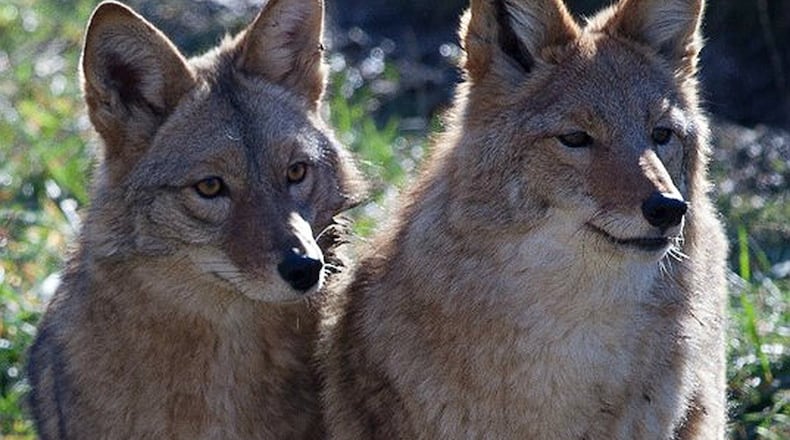One woman said she was approached by two groups of coyotes.
Tina, a woman who declined to provide her last name and manages property at 5284 Winton Road, said in the past month, two different times packs of coyotes (a group of three and a group of seven) approached her. She did what was recommended, as it’s mostly reported that coyotes are fearful of humans, but it didn’t work for her.
“Granted, I’m a small person, but as I waved my arms and screamed and yelled, they walked closer,” she said. “As I ran towards them, they stood their ground. It was a very frightening experience.”
Her concern is that young children and family pets that are in the nearby subdivisions cannot play in fenced-in yards.
“That is not an acceptable suburban living environment,” she said.
City Council invited Brett Beatty, Wildlife Management Supervisor for the Ohio Division of Wildlife, to address the public about the growing and consistent problem of coyotes in urban, rural and suburban communities. He said there are various degrees of concern for communities, from low to high, and Fairfield Vice Mayor Tim Meyers said, based on the public’s response, there are some areas in Fairfield that are at the high level of concern.
“I think we’ve got areas (in the city) that are in the high (level of concern), that we’ve seen high, where dogs have been attacked, we’re hearing that quite a bit, and depending on where you live in Fairfield. It’s pretty significant,” Meyers said.
Beatty said in order to determine whether it’s a high, medium, or low-level area of concern, there has to be some type of reporting and/or tracking system.
“It could be hard to confirm, but if it could be confirmed, that would be a plus as well,” he said.
A coyote is historically native to the Western plains, but as habitats changed and other predators declined, such as wolves and mountain lions), they’ve expanded their territory across the country. Coyotes range from 20 to 45 pounds (females are smaller) and are about the same size or smaller as medium-sized domesticated dogs.
They are known for their pointy ears that do not flop, a black-tipped bushy tail always pointing downward, and most have an overall grey appearance and yellow eyes. There are color variations, from jet black to all-white. They are vocal, from barking and howling to yelping and whining.
Mark Finneran, the Ohio state director of the U.S. Human Society of the United States, provided the city of Fairfield with a template Coyote Management Plan that’s based on collected best practices and lessons learned from communities facing similar challenges with the animal.
“This is something we have had the opportunity to work through across the country,” he said. “Fairfield is not alone in facing these challenges.”
Finneran aid the plan aligns with the message relayed by Beatty, in that coyotes aren’t going anywhere, and the reason they’re here in Fairfield is that the food resources are readily available.
“Oftentimes, the reason we do have conflicts in these situations is because of inadvertent actions by members of the public that habituate these coyotes to be less fearful of human contact,” he said, adding that they don’t want to interact with humans, “but they can overtime be habituated, and lead to the types of situations that have unfortunately seen here in Fairfield.”
Beatty said modifying human behavior “is the best way to reduce conflicts with coyotes,” which includes removing bird feeders (which attracts birds and small rodent), don’t keep pet food outside, make sure garbage is secure in a lidded trash bin, and outdoor grills are cleaned. He also recommends harassing and hazing coyotes if they’re seen, which means yelling, clapping and making loud noises.
“Think of it like you’re training your dog. You want to make that animal feel uncomfortable until it realizes it’s in a bad situation and it leaves,” he said. “You want the coyote to be the first one to leave that interaction.”
But don’t corner the animal, because it could attack as opposed to running away.
Meyers said they would take the information to formulate a plan of action, but it will take time.
“The more information we have on this, in making sure we take it serious, it fundamentally critical, and we will,” he said. “From a council standpoint, it is of critical importance to this council ... . Council’s committed to solutions. As we’ve said throughout this meeting, this is not an easy topic by any means. There are pitfalls on both sides, but we have to take some action and start to review at least what does an operating plan in the city looks like.”
About the Author

